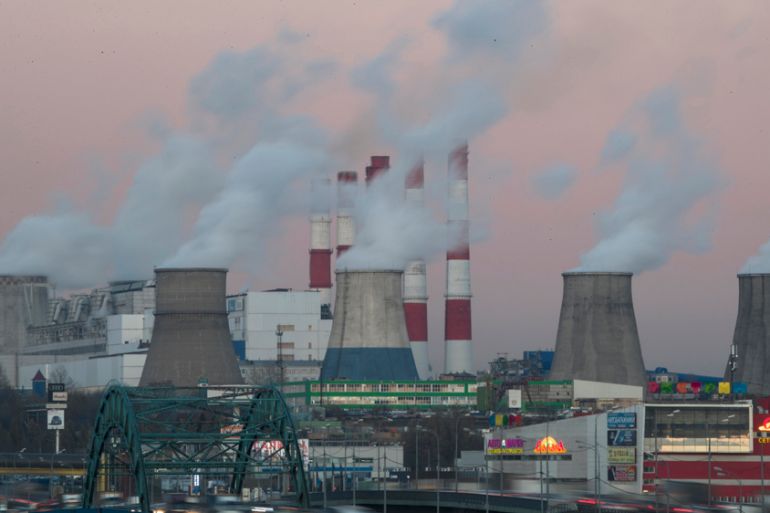Emissions must be halved to avoid dangerous climate: Scientists
Public concerns about catastrophic climate change are growing and have led to protests around the world.

Emissions need to be halved by 2030 to limit warming to 1.5 degrees Celsius but temperatures are on track to be double that by the end of the century even if countries’ current plans are fully implemented, scientists say.
A group of European researchers, Climate Action Tracker, tracks nations’ progress towards the globally agreed aim of limiting warming to well below 2C and a more ambitious target of 1.5C.
Keep reading
list of 4 itemsAfter the Hurricane
World’s coral reefs face global bleaching crisis
Why is Germany maintaining economic ties with China?
Public concerns about climate change are growing and have led to protests around the world.
However, energy-related carbon dioxide emissions were at a record high last year and new renewable power capacity has stalled after years of strong growth.
At the same time, methane, a more potent greenhouse gas than carbon dioxide, has risen in recent years due to oil and gas production, including fracking.
An assessment of 32 nations’ climate plans by Climate Action Tracker shows only two governments’ plans – Morocco and the Gambia – are enough to meet the 1.5C limit.
|
|
Public priority rising
The planet is currently on track for a 4.5C increase in global temperature as CO2 emissions continue to rise each year.
A recent paper said if “emergency” action isn’t taken in the next decade, one billion people could be displaced and fighting desperately for survival by 2030.
Half the world’s population will face “lethal heat” conditions for more than 20 days a year – “beyond the threshold of human survivability”.
Drought, wildfires, and floods will collapse entire ecosystems as two billion people struggle for potable water. Mega-cities such as Mumbai, Hong Kong, Lagos, and Manila will be largely abandoned because of massive floods.
If nations fully implement the plans they made under the 2015 Paris Agreement, the temperature rise will be on track to reach 3C by the end of the century, just slightly lower than the 3.3C rise the tracker forecast last December.
“Public concern is rising fast, with global movements like Fridays for Future and Extinction Rebellion pushing governments towards action as people take to the streets,” said Niklas Hohne of NewClimate Institute, one of the organisations which provides analysis for the Climate Action Tracker.
“As we turn from climate change to a climate crisis, the public priority is rising, and we expect governments to take bold action,” he added.
On Tuesday, United Nations’ climate chief Patricia Espinosa told government representatives and UN officials meeting in Bonn, Germany, they were falling far short of what was needed to reduce emissions by 45 percent by 2030 to limit global warming.
However, some countries have announced new targets, such as Britain’s goal to reach net zero emissions by 2050 and Chile’s plan to become carbon neutral by 2050 and shut all coal plants by 2040.
Off track
Currently, five countries – including India and Costa Rica – have targets compatible with limiting temperature rise to 2C, the Climate Action Tracker report said.
Ten more – including Brazil, Canada, the European Union, Australia and New Zealand – have plans compatible with a 3C limit. Nine more – including Japan, China and Chile – have targets compatible with a 4C limit.
Five countries – Russia, Saudi Arabia, Turkey, Ukraine and the United States – have targets compatible with the world experiencing temperature rise above 4C, the report said.
Governments have been urged to put forward new plans to increase efforts to combat climate change at a UN summit this September in New York City.